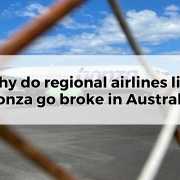Why is financial advice expensive?
Why is financial advice expensive?
Why is financial advice expensive? It’s because it’s a long process. This explains why it is often more expensive than customers think. Some people even assume it will be free, yet free lunches don’t exist.
The main purpose of financial advice is to recommend products and strategies for a person’s unique circumstances. If your super fund only offers limited free advice, they are probably conflicted and unlikely to suggest or compare external products. All superannuation and investment products are prohibited from having commissions, and Wealth Factory does not get paid for any of the products it suggests, with the exception of insurance. Insurance commissions are optional; by default, we accept them to keep financial advice more affordable.
Financial Advice Process
The financial advice or planning process begins with a fact-find meeting, which serves as a chance to get to know one another, talk about your circumstances and goals, and determine whether a mutually beneficial relationship can be established. We will go over the scope of work and provide a quote upfront with no obligation.
Please feel free to visit another adviser if you don’t think you can trust us or want to see what they have to offer. Our clients like how we are always honest and straightforward with them. We will begin the advice process once you agree to sign up as a one-time or ongoing client.

Researching available and comparable products that can be used to attain your goals and creating suitable strategies to do so are all part of the advice process. We don’t have a philosophy that if you partner with us, you’ll utilise X product, SMSF, or investment because doing so is almost never in your best interests.
Ask your adviser why a specific product was recommended and how it helps you achieve your goals if this is your current experience (which is rather typical).
Wealth Factory employs a variety of products, including industry super, SMSF, wraps, and platforms. We also use a variety of investment fund managers. Being product-neutral is important to us, and it should be important to our clients.
A document known as a “Statement of Advice” (SOA) is then created with the advice offered by a financial advisor. This document describes the advice and why it is in your best interests, as well as any alternate plans we considered but didn’t recommend. This document is somewhere between 50 and 100 pages long. Although much of it is for regulatory purposes, there will be useful information for you in there.
Most of the time, you will obtain a hard copy of SOA to take with you. Additionally, it will clarify any costs or insurance commissions payable. In our opinion, commissions can contribute as long as they don’t bias the advice. We believe that the commision will have no impact on the advice given because all retail insurers pay the same amount and the money only goes towards business expenses.

It takes between 12 and 20 hours to do product and strategy research, write a statement of advice, and implement recommendations. The adviser handles the majority of this work, with a paraplanner working 4-6 hours per week. Completing the necessary compliance paperwork to demonstrate that the advice was fair and in the client’s best interest takes up a large portion of this time. Even though many clients might not perceive the benefit in this, it’s part of the cost of providing advice.
The actual costs of becoming an adviser before any advice is offered have an impact on how much financial advice will cost. According to articles I’ve read, hiring an advisor costs about $100,000 per year. Although the fees are considerable, I do think this is a bit unfair. The cost of professional indemnity insurance might be as high as $5,000 to $10,000 per year if you have a history of claims. Due to my dual role as a mortgage broker and an adviser, I am now subject to an ASIC levy that ranges in amount but is over $1000 annually for me.
The membership fees for the Tax Practitioners Board, the Finance Brokers Association, and perhaps a few other adviser associations range from $500 to $1,000. You must be either self-licensed or an authorised representative of a licensee in order to act as an adviser. Although there are different fee structures and prices involved, the first adviser typically costs between $40 and $50,000 per year, with discounts frequently available for additional advisers. The cost of financial planning software might easily exceed $500 per month. Add in a tiny office lease, and the total annual expenses easily exceed $100,000.
Realistically, an adviser can provide up to 80 unique pieces of advice per year, including annual reviews for existing clients. I heard that an adviser would require 80 ongoing or new clients every year, or a combination of the two, in order to make the average income for an Australian after costs, and let’s suppose they receive the average continuing service fee of $3300. Because of this, the advice fees are not several hundred dollars.
We follow a code of ethics, so we won’t make you an offer to work with us if we can’t add value to your situation. Looking for the best way to invest $1,000? It wouldn’t be a good bargain because the advice costs the same as a million dollars. We choose to be open since we are aware of how fiercely competitive our pricing is. The price of a couple is not twice as much as that of an individual. Discounts are also offered when several topics are incorporated into comprehensive advice. We want to assist everyone. Many people will have needs, though, that make the price unacceptable.










